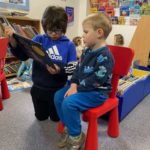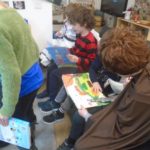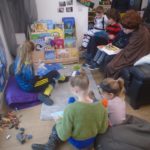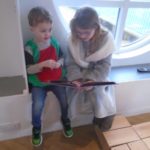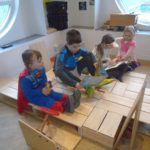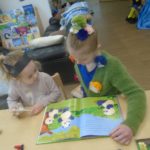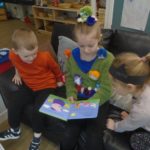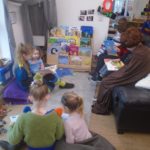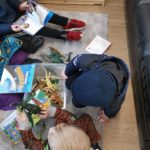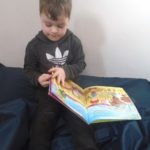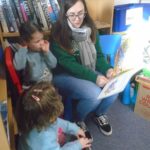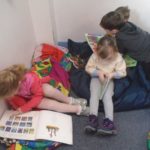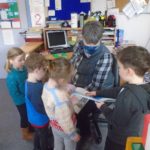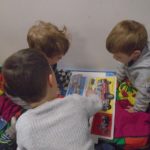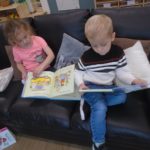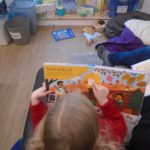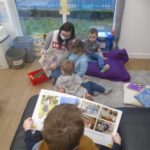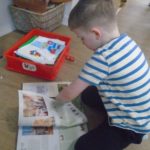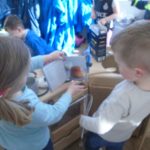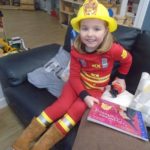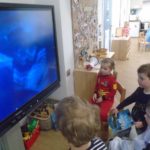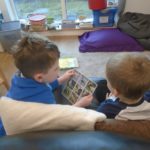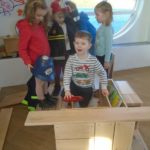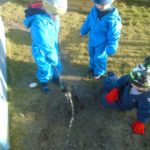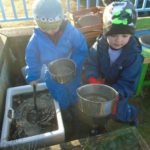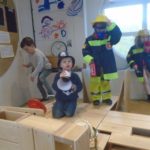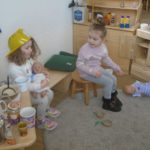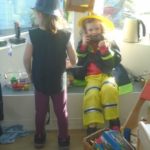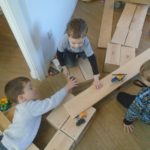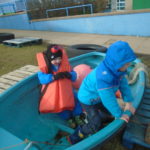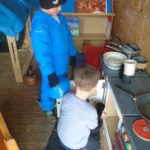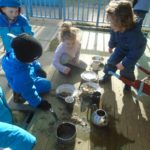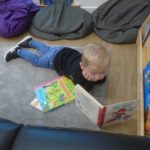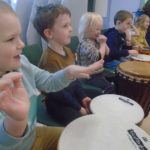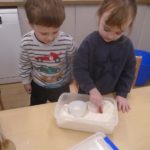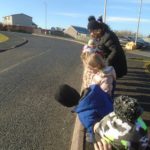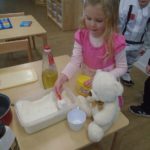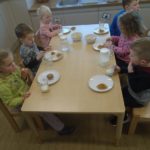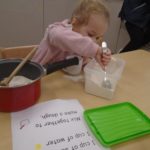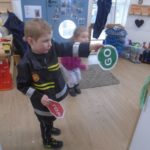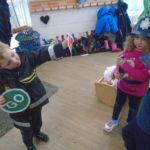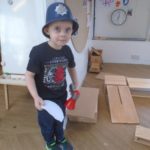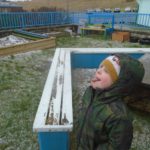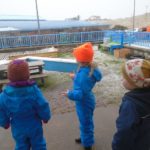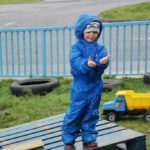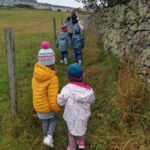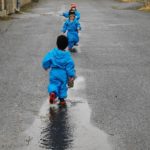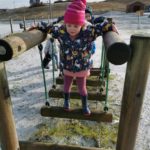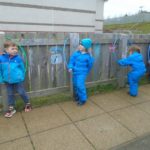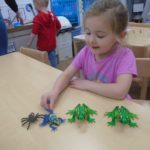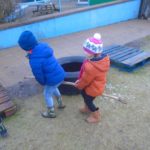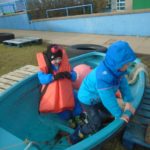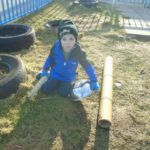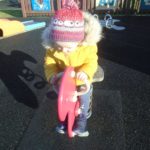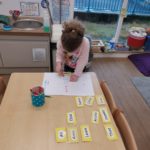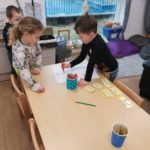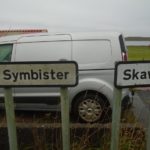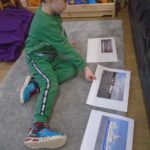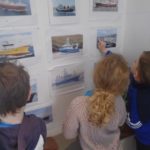It was World Book Day on Thursday. We thoroughly enjoyed it! Some of us dressed up as story characters, some of us created costumes in the setting and P4/5 read us stories both in the nursery and in the school library. We loved sharing stories and listening to stories with the older children. Shared reading with older peers is a fantastic way to motivate us to become readers ourselves and helps us develop an awareness of the relevance of texts in our lives. Thank you P4/5!
Our recent weekly visits to the library has been great for increasing our motivation to read too. We have explored many different texts, listened to stories, shared stories with each other and learned library rules. On Thursday when we joined P4/5 in the library it was already a safe and familiar place where we could relax with books.
It’s not just on World book day or in the library where we celebrate books and learn to read. We do this every day in nursery too! Being free to choose and explore books and texts in all areas, as part of our play, develops our enjoyment and interest in books. It is important for us to be surrounded by a variety of books and texts and to be able to use these throughout the day as listening to stories at this age makes us much more likely to enjoy reading later at school. Often we create our own stories and explore events and characters from familiar books as part of role play and imaginary play. We need to play in this way in order to develop reading and writing skills for more formal learning later.
Before we can formally read we need to have a strong base in phonological awareness which is learning about sounds and spoken language. Some of the ways we develop these skills are by practising our listening and attention by following rules and routines each day and listening to staff and to our peers throughout play. We join group activities such as drumming, making playdough, trips to the playpark/community, snack and lunch. All of these are natural avenues where we learn to listen and pay attention.
Before we can read we need to be able to hear differences between a range of sounds. We learn this when playing outside, listening to environmental sounds and the sounds of nature. We also learn this through indoor play when we play with musical instruments, listen to stories from cd’s and explore ways to make sounds using different materials and resources across all areas of the setting. It is also important for us to be able to hear words and remember what they mean. Often a visual support can help us link what we hear with meaning. Using “stop” and “go” signs as part of our play this week is an example of how we learn to do this through play.
To become good readers it is important for us to be able to explore and play with patterns and sounds of language. One way we do this is through developing our skills in hearing and detecting rhyme. We sing nursery rhymes, make up silly rhymes and use rhymes in our play ever day at nursery. We also learn to listen for beats in words when we play with any type of resource that can be used as beaters and also in our jumping and clapping games. Some recent examples below include “wheels on the bus” and various forms, “1o little monkeys”, “5 speckled frogs”, acting out and changing familiar story “Room on the broom”, “row row row your boat” (various destinations and animals), using sticks on varied surfaces for friends to follow beat and “ride a cock horse”
Often the first letters and words we learn to read are familiar ones from our environment. Every day we notice environmental print. We find our names when we come in to the setting and stick them up to show we are here. We learn what our friends names look like too. There are signs and symbols throughout the nursery that we use as part of our play every day too. When we go for trips in the community we look at car number plates to find our letters and read the road signs that we pass. By being interested in environmental print we also learn about the sounds of letters, what the beginning and end of words sound like and how blending letters together makes a full word. Exploring sounds, letters and words helps us to discover how they work together which will help us become successful readers of the future.






